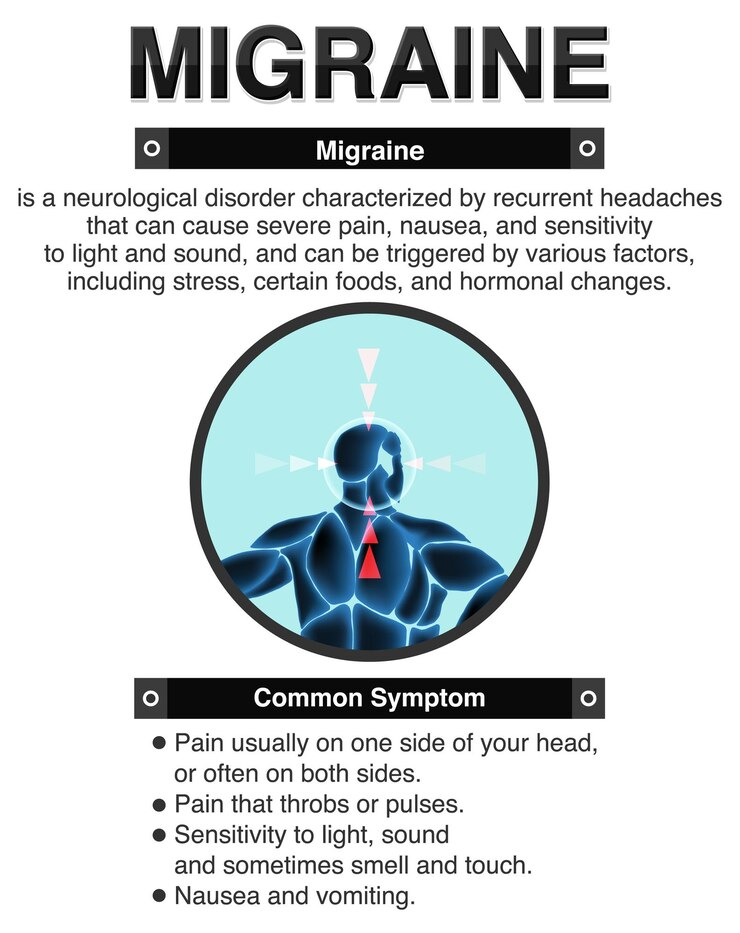Natural home remedies may help alleviate migraine relief. Ice packs have been known to have a numbing effect that may reduce symptoms. Stay hydrated by drinking plenty of fluids such as water or other beverages to remain hydrated.

Studies suggest that diets low in gluten and rich in histamine could help prevent migraines; however, more research needs to be conducted. Natural migraine relief is possible, and here are some options to consider.
10 Natural Home Remedies for Migraine
There are some natural remedies available that may help provide relief from the pain and discomfort of migraine headaches. In this blog post, we will discuss five home remedies for natural migraine relief.
1. Magnesium Cream
Magnesium cream is an effective topical application designed to ease inflammation and muscle spasms associated with migraines, as well as ease PMS symptoms – making it an attractive solution for women experiencing headaches during their menstrual cycle.
Before taking magnesium supplements, it’s wise to consult your physician. They could not be safe depending on other health issues you may be dealing with, and it may take up to three or four months before any beneficial results show up.
Those suffering from migraine should consume foods rich in magnesium, such as spinach, Swiss chard, pumpkin seeds, yogurt kefir, and almonds, as these are great sources of this essential mineral.
2. Mint and Menthol Rub
Menthol’s soothing and refreshing sensation feels good against the skin, and research indicates it may even help ease headaches, giving you great natural migraine relief. Try applying it as massage gel or using Vicks VapoRub and Tiger Balm products containing menthol rubs and sticks as a remedy.
Some individuals experience relief from migraine and headaches by indulging in mint products such as drops, tea bags, candy bars, or chewing gum containing peppermint or spearmint; spearmint has shown to be equally effective at relieving discomfort as its more popular counterpart.
Herbal supplements may offer relief for migraine sufferers as well, though many have yet to be rigorously tested to prove their efficacy. One popular herbal treatment, feverfew, has been proven to decrease migraine onset and frequency (53) significantly but may cause serious adverse side effects, so always consult your physician before trying anything new.
3. Epsom Salts Bath
Many people swear by Epsom salt baths as a natural migraine relief remedy, thanks to magnesium’s relaxing effects on muscles surrounding the skull, which may trigger migraines. Furthermore, relaxing baths provide improved blood circulation.
Epsom salt dissolves in water to release magnesium and sulfate ions that can be absorbed through the skin, according to dual board-certified pain management and physical medicine and rehabilitation physician Dmitriy Dvoskin. Sulfates may help flush away toxins while decreasing inflammation, according to sports medicine specialist George Eldayrie, M.D.
Epsom salt baths can also help increase magnesium levels, something many Americans don’t get enough of. Low levels are linked with headaches and migraines; spasms play a significant role in their pain experience, and magnesium helps reduce spasms for added relief during migraine attacks.
4. Cold Compresses
Migraine experts don’t exactly know why cold therapy helps, but some theorize that it may have something to do with blood vessel constriction. When experiencing migraine attacks, our bodies release neurochemicals, which trigger intense head throbbing – when placing ice on our heads, it decreases this release and, therefore, helps control migraine symptoms, according to Dr. Najib.
Cold showers or baths may help ease migraine pain by soothing tense muscles. Aromatic essential oils may also offer relief; peppermint is known to reduce pain and anxiety, while lavender reduces stress levels.
Instead of turning solely to home remedies for migraine relief, try identifying and avoiding food and environmental triggers of migraines, like perfumes, cigarette smoke, and strong odors. A diet rich in B (particularly riboflavin and D) and plenty of water is key to staying hydrated and managing migraine symptoms.
5. Ginger
Ginger’s spicy, invigorating flavor has long been recognized for its ability to ease digestive troubles, prevent nausea, and prevent colds and flu. But it also contains pain-relieving properties, making it effective at treating migraine headaches.
Studies indicate that ginger may help significantly to reduce migraine pain and nausea. Researchers conducted one study that revealed patients treated with both ginger and nonsteroidal anti-inflammatory drugs (NSAIDs) experienced better relief of their migraine symptoms than those given only an NSAID alone.
Ginger can be enjoyed in powder form as tea or eaten as ginger chews, while research also indicates it may help with nausea prevention by applying an essential oil blend that includes other antinausea oils to your skin. If this option appeals to you, select an essential oil blend with anti-nausea properties for the best results.
6. Yoga and Meditation
Yoga is a form of exercise that combines physical postures with breathing techniques and meditation in order to achieve mental calmness while improving strength, flexibility, balance, coordination etcetera.
It has been found effective at reducing stress which is one of the most common triggers for migraines; when practiced regularly it helps relax muscles thus preventing tension headaches which often lead up to migraines if left untreated.
Additionally certain poses like shoulder stand or plough pose have been known to improve blood circulation throughout the body by stimulating pressure points on head neck area thereby alleviating headache related discomforts caused due improper flow of oxygenated blood through brain vessels.
7. Quality Sleep
Getting enough quality sleep may help reduce the frequency of migraines. Quality sleep is essential for overall health and well-being, so it’s important to make sure you are getting enough restful sleep each night in order to maintain a healthy lifestyle.
Sleep deprivation has been linked to an increased risk of migraine attacks as well as other chronic conditions such as obesity, diabetes, cardiovascular disease and depression.
Studies have shown that people who get less than 6 hours of sleep per night are more likely to experience frequent or severe migraine episodes. Therefore it is important that those suffering from migraines try their best to get 7-8 hours of quality rest every night.
8. Acupressure
The most commonly used technique for treating migraines with acupressure is called “trigger point therapy” which involves targeting specific areas where tension or tightness may be present due to muscle strain or spasms caused by migraine headaches.
To start off your session you should begin by locating three key trigger points located at either side of the neck near base skull (GB20), just below each earlobe (TE17), and at temples(LI4). Once these spots are identified you will then use gentle but firm finger pressure applied directly onto each area using circular motions for several minutes until sensation subsides.
You may feel slight discomfort during this process however if there’s any sharp intense pains its best stop immediately & consult a doctor before continuing further treatments.
9. Lavender Oil
Lavender oil is widely used in aromatherapy and has been studied for its potential to reduce the frequency and severity of migraine headaches. It has been used for centuries to help ease headaches, and its calming properties make it an ideal choice for those who suffer from migraines.
The active ingredients in lavender oil are linalool and linalyl acetate which have both been shown to reduce inflammation as well as relax the body’s muscles, helping to ease tension headaches caused by stress or anxiety.
Lavender also contains compounds like limonene which may act on serotonin receptors found throughout our bodies; this helps improve mood and relaxation levels while decreasing sensitivity to pain signals sent through nerves during a migraine attack.
10. Peppermint Oil
Peppermint oil has been used as an herbal remedy for headaches and other ailments due to its anti-inflammatory properties and calming effects on the body. It may relief pain from migraines or tension headaches by reducing inflammation in blood vessels around the head.
To use peppermint oil for migraine relief you simply need to apply a drop or two of the essential oil onto your temples or forehead while massaging gently into skin. This should help relieve any pressure felt on those areas during an attack.
You can also try adding a few drops of peppermint essential oil to boiling water (or just hot water) and then inhale it deeply. This will allow you to get away from the noise and will help calm any discomfort caused by exposure to too many stimuli when you suffer from a migraine.
Conclusion
To get relief from migraine, turning to natural remedies not only relieves the symptoms but also improves overall health. From maintaining hydration to incorporating herbal allies, the journey to a migraine-free life involves a multifaceted approach. By incorporating these practices into your lifestyle, you pave the way to a healthy, migraine-resistant future.


